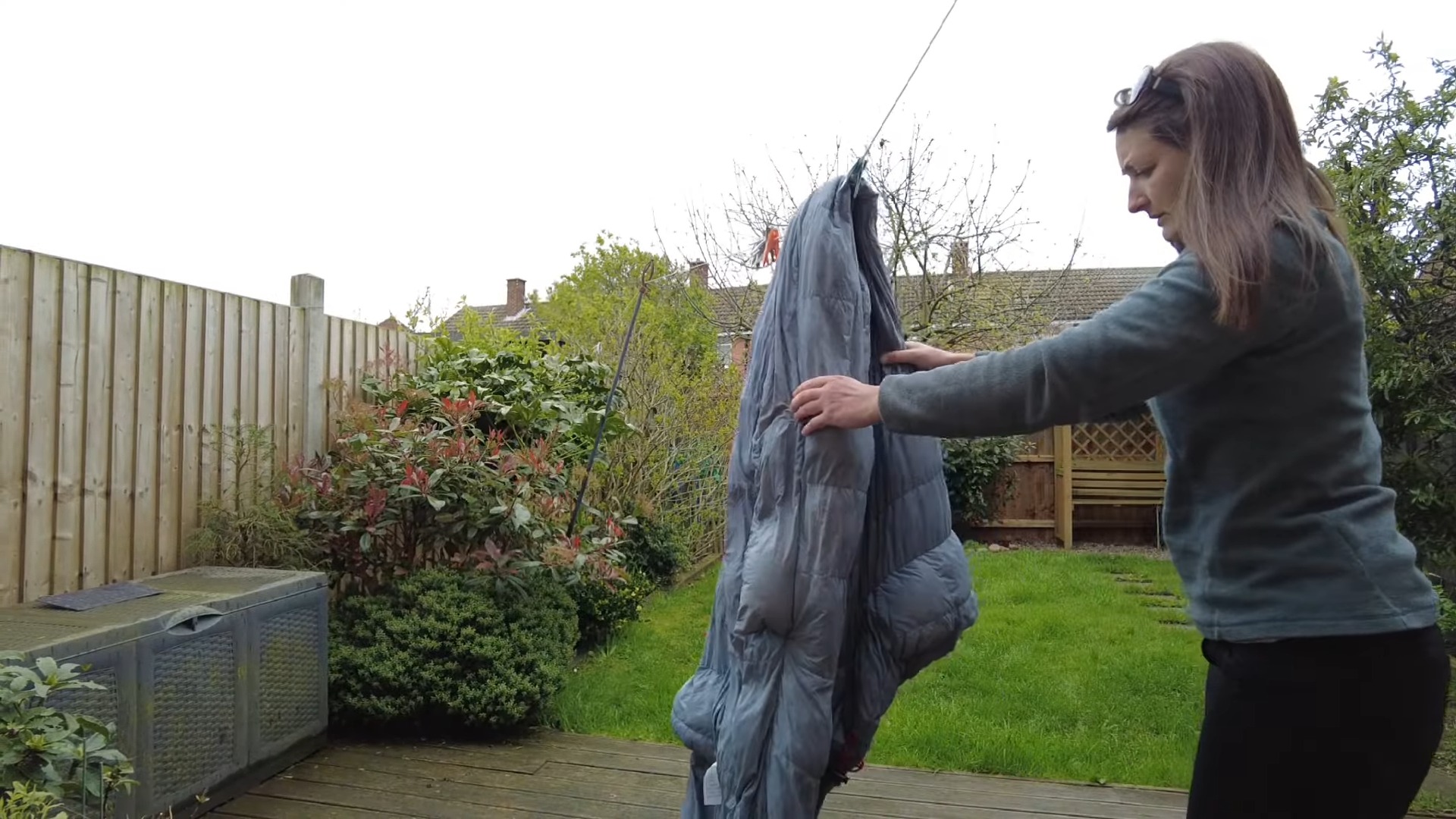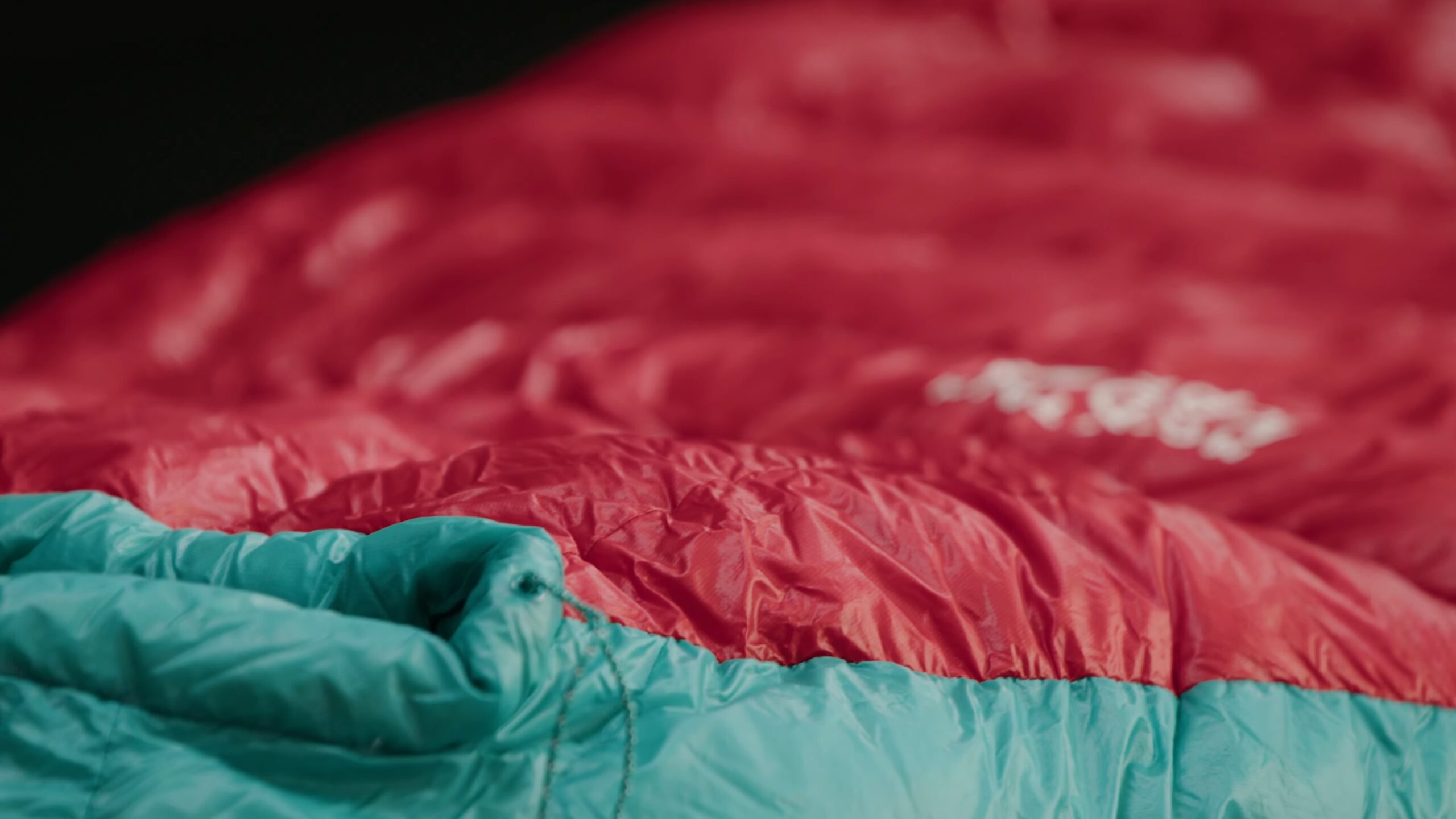Hygiene is the most important thing to focus on when it comes to a sleeping bag. You will certainly agree nobody would want to sleep in or at something that’s not as clean as possible. Having the proper knowledge about this aspect is crucial.
You should have the cleaning process in mind when you’re buying one of these.
I’ve experienced this process several times and I went through various methods. I’m excited to share my experience in maintaining one of the most essential pieces of your adventure kit. Through years of trekking and camping, I’ve come to understand the importance of keeping your sleeping bag in top-notch condition.
Let’s gear you with knowledge and get into the specifics of keeping your sleep sanctuary clean and cozy.
Preparing Your Sleeping Bag for Washing
Think about this should begin the moment you raise a tent. The location of your choice is important in this case since the surroundings can either maximize or minimize the amount of dirt in your tent.
Begin by inspecting your gear for any rips or tears. Address these issues before washing to prevent further damage. Pay particular attention to zippers and seams, as these areas are prone to wear and tear.
| Step | Details | Tips |
|---|---|---|
| First Glance | Inspect the sleeping bag for any signs of damage such as rips or tears. | Pay extra attention to often-missed small damages. |
| Zippers and Seams | Check zippers and seams for wear and tear as they are high-stress areas. | Use a magnifying glass for a thorough examination if necessary. |
| Repair Work | Repair any damage found prior to washing to prevent it from worsening during the cleaning process. | Use repair kits designed for sleeping bags or take it to a professional if required. |
| Step | Details | Tips |
|---|---|---|
| Spot Identification | Look for spots or stains that might need individual treatment. | Mark the areas with a tape gently if necessary to remember the spots during treatment. |
| Targeted Cleaning | Apply a gentle cleaner appropriate for the fabric on the stained areas and follow instructions. | Test the cleaner on a small, inconspicuous area first to ensure it doesn’t damage the fabric. |
| Protecting the Material | Pre-treat stains to avoid over-washing the entire sleeping bag, which can degrade its quality. | Use a soft brush or cloth to apply the cleaner without damaging the material. |
Choosing the Right Cleaning Supplies

Selecting the appropriate cleaning agent is essential. Choosing between natural and chemical cleaning agents is easily among the most important decision you will make in this regard. Therefore, you should be thoroughly informed about both.
We are talking about something you need to pay attention regardless of piece of gear you are about to clean. Doesn’t matter if you are cleaning a stove or a tent. Also, choose widely before you buy, since this will have an impact on this process as well.
Navigating between different products can be a long process, but it is needed to commit the time to it.
| Cleaning Agent | Type | Usage | Suitability | Environmental Impact |
|---|---|---|---|---|
| Soap Nuts | Natural | Used in place of standard detergents | Good for both down and synthetic | Low |
| White Vinegar | Natural | Stain treatment and odor elimination | Good for synthetic, test first with down | Low |
| Baking Soda | Natural | Odor elimination | Good for both down and synthetic | Low |
| Standard Laundry Detergent | Chemical | Common washing agent | Not recommended for down, cautious use with synthetic | Higher |
| Bleach | Chemical | Disinfectant and whitening agent | Not suitable for either down or synthetic | High |
Hand Washing Techniques

Hand washing is a safe method for cleaning your gear. Start by filling a bathtub with lukewarm water and a suitable cleaner. Gently submerge and agitate the bag, allowing the solution to penetrate the material.
Rinsing Thoroughly
After a thorough wash, drain the tub and refill it with clean water to rinse. Repeat this process until all soap residue is gone. It’s critical to remove all traces of detergent to preserve the insulation’s effectiveness. Rinsing is a procedure present in cleaning all the parts of the gear, like tents.
Once again, let us say that you have a 4-person tent, the size of your tent doesn’t play a significant role in this case. Material is way more important. Sure, a smaller one can knock down the time needed to perform this procedure.
Water Temperature and Handling
Ensure the water is not too hot, as extreme temperatures can damage both down and synthetic fills. Handle the wet bag with care to avoid straining the fabric or tearing the seams.
Machine Washing Your Sleeping Bag

For machine washing, front-loading machines are preferred. Place the gear in the machine with a gentle detergent, and set it to a delicate cycle with a mild spin. Avoid top-loaders with agitators, as they can damage the gear.
Selecting the Right Washer and Cycle
Choose a machine large enough to accommodate the bag without compressing it too much. The gentle or delicate cycle is typically best for this type of gear, as it minimizes stress on the material and filling.
Load Balancing
Balance the wash load to ensure an even clean. This may mean adding a few towels or another similar item to the cycle. The goal is to allow the bag to move freely without twisting or tangling.
Drying Your Sleeping Bag Properly

Now let us explore some useful methods for drying your sleeping bag efficiently.
Air Drying
Air drying is the safest option, though it requires time and space. Lay the bag flat in a well-ventilated area away from direct sunlight. If tumble drying, use a low heat setting and place a few tennis balls in the dryer to help fluff the filling.
Air drying a sleeping bag can take anywhere from 1 to 3 days depending on the material, humidity, and air circulation, with down taking longer to dry than synthetic fills.
Maintaining Loft
Whether air drying or using a dryer, periodically fluff the bag to maintain its loft. This helps the insulation to dry evenly and prevents clumping, ensuring that the bag will provide consistent warmth.
Optimal Drying Temperatures
Never use high heat, as this can damage both the fabric and the fill. Patience is key; it may take several hours to a full day for the bag to dry completely.
Determining Your Type
As is the case with cleaning tents, it is important to say that knowing the type of product is important before you can start the cleaning procedure, identify the filling material of your gear. Down-filled items require different care than synthetic ones. Each has distinct washing and drying requirements, which, if not followed, can lead to damaged gear.
Down vs. Synthetic: A Comparison
| Material | Wash Cycle | Detergent Type | Water Temperature | Drying Method |
|---|---|---|---|---|
| Down | Gentle | Specific for down | Cool to warm | Low heat, multiple cycles |
| Synthetic | Normal | Mild or specific for synthetic | Warm | Medium heat, single cycle |
Manufacturer’s Guidance
Always check the care label for manufacturer’s recommendations. It often includes vital information about the material composition and washing instructions. Overlooking this information can result in irreversible damage, so it’s a step that should never be skipped.
Storage Tips to Keep Your Sleeping Bag Fresh
While there is no definite answer on what are the ideal storage conditions for keeping your sleeping bag as fresh as possible, there are some indicators that can help you quite a bit.
You should consider the following tips:
- Cool and Dry: Prevents mold and mildew growth.
- Loosely Packed: Maintains loft and insulation properties.
- Breathable Storage Bag: Allows for air circulation.
- Away from Direct Sunlight: Protects against UV damage.
- Not Compressed: Avoids crushing the fill material.
- Spot Cleaning for Quick Maintenance
When to Spot Clean
Quick maintenance is appropriate for minor spills or soiled areas. This method is less stressful on the gear and can be done frequently without a full wash.
Spot Cleaning Dos and Don’ts
Use a gentle soap and a soft cloth or sponge to clean the affected area. Do not scrub vigorously, as this can damage the fabric. Rinse the area well to remove all soap.
Reapplying Durable Water Repellent (DWR)
Maintaining the water-resistant qualities of your outdoor gear is essential for comfort and protection against the elements. As your gear gets older, you might notice a decline in its ability to repel water. This is a clear sign that the Durable Water Repellent (DWR) coating has started to diminish.
Recognizing the Need for Reapplication
- When water droplets no longer bead up but instead spread out and absorb into the fabric, it’s a clear indicator that the DWR finish has deteriorated.
- The fabric may feel heavier and take longer to dry out, which can be particularly noticeable in wet conditions.
- You might also observe that the sleeping bag doesn’t provide the same level of warmth since moisture can lead to a significant loss of insulating efficiency.
Preparing for DWR Reapplication
- Start by cleaning your sleeping bag according to the care instructions, as dirt and oils can hinder the effectiveness of the DWR spray.
- Make sure the sleeping bag is completely dry before you begin the reapplication process. Any residual moisture can prevent the DWR from adhering correctly to the fabric.
- Lay the sleeping bag flat or hang it up in a well-ventilated area to ensure all parts of the bag are accessible.
DWR Reapplication Process
- Choose a DWR spray that is compatible with your sleeping bag material. There are specific formulations for down-filled bags versus synthetic-filled ones.
- Shake the DWR spray bottle well and start applying it to the sleeping bag’s surface in a well-ventilated area or outdoors.
- Hold the bottle about six to eight inches away from the fabric and spray in a sweeping motion to ensure even coverage, avoiding any pooling of the product.
- After application, allow the DWR spray to dry for the amount of time recommended by the manufacturer. Some products may require heat activation, which can be achieved by tumbling the bag in a dryer on a low setting or using a hairdryer on a gentle setting.
- Check for any missed areas and apply a second light coat if necessary to ensure thorough coverage and maximum water repellency.
Common Mistakes to Avoid

When it comes to washing your sleeping bag, certain missteps can significantly reduce its performance and longevity. Overlooking the care instructions or opting for harsh cleaning agents can degrade the insulation and damage the delicate fabrics.
It’s equally important to use a gentle cycle in the washing machine to prevent tearing and to ensure proper drying to prevent the growth of mold and mildew.
To maintain your sleeping bag’s condition, steer clear of these common errors:
- Ignoring Manufacturer’s Care Labels: Failing to follow the specific washing and drying instructions provided.
- Using Standard Detergent: Regular detergents can strip natural oils from down filling and damage synthetic fibers.
- Washing with Harsh Conditions: Hot water and aggressive spin cycles can lead to the breakdown of materials.
- Overstuffing the Machine: This prevents the bag from rinsing properly and can cause uneven drying.
Sleeping Bag Washing Under Different Conditions
Washing a sleeping bag is an essential part of gear maintenance, especially for those engaged in primitive, dry, and stealth camping. Each of these camping styles presents unique challenges and considerations for cleaning your sleeping bag:
Primitive camping often exposes your sleeping bag to more dirt, dust, and possibly natural debris like leaves and pine needles. Water sources may be scarce, so you’ll need to use water efficiently. Spot cleaning is a good approach here.
Use a damp cloth with a mild detergent to spot clean any dirty areas. If you have access to a small amount of water, you can rinse and wring out the cloth to remove soap residue.
Dry camping, particularly in desert-like environments, can leave your sleeping bag covered in dust and sand. Since dry camping often means no water hookups, conserving water is crucial. Shake out the sleeping bag to remove as much dust and sand as possible.
For spot cleaning, use a lightly dampened cloth. If you’re near a facility with water after your trip, consider a more thorough hand wash or machine wash, depending on the sleeping bag’s material.
Stealth camping often involves using a sleeping bag that blends in with the environment, which can get dirty easily. Maintaining a low profile is essential in stealth camping, so cleaning methods should be quick and quiet.
Similar to primitive camping, use spot cleaning techniques. Avoiding heavy washing that requires hanging the sleeping bag out to dry for long periods is advisable to remain discreet.
FAQs
What are the risks of washing a sleeping bag incorrectly?
Washing a sleeping bag incorrectly can lead to reduced insulation effectiveness and potential damage to the fabric and filling, which may compromise the bag’s warmth and comfort.
Can I wash my sleeping bag with other clothes?
It is not recommended to wash a sleeping bag with other clothes as zippers and hooks can cause damage, and it may prevent the bag from being cleaned and rinsed thoroughly due to overcrowding.
What’s the best way to store my sleeping bag when it’s not in use?
The best way to store a sleeping bag is in a large, breathable storage bag or hung in a closet to maintain the loft and prevent moisture buildup, which can lead to mildew.
Can I iron my sleeping bag to remove wrinkles?
Ironing is generally not advised for sleeping bags as the high heat can melt synthetic fabrics and damage water-resistant coatings; instead, gently smooth out wrinkles by hand.
The Bottom Line
I take great pride in sharing knowledge that empowers you to care for your gear with the same level of passion you bring to your outdoor adventures. Remember, the time and attention you invest in your sleeping bag will pay dividends in warmth, comfort, and durability on the trail.
As someone who has learned these lessons through experience, I assure you that the reward of a well-maintained sleeping bag is unparalleled. So here’s to many more nights under the stars, cocooned in the clean, fresh fabric of your well-cared-for sleeping bag.
Hey everyone, I’m Jared. Outdoor life wasn’t something I inherited. My parents had never been on a trail or in a tent. The outdoors found me another way. My best friend in middle school had a deep appreciation for nature, and his enthusiasm rubbed off quickly. We spent countless afternoons trekking through local trails, soaking up everything we could along the way.
That interest never faded. Through college, I kept hiking and spending as much time outdoors as possible. After junior year, I took a break from school to chase a dream: completing the Appalachian Trail. I made it through, but not without setbacks. I spent nearly every dollar I had on gear—some pieces were solid, but others let me down hard. One highly praised backpack barely survived a week. Watching money vanish like that stung. No one deserves to be misled.
Too many reviews felt like fluff. I knew something had to change. I started asking other hikers and survivalists what they looked for, what they struggled with, and what they wish they had known sooner. Over time, a clear picture formed. People didn’t just need help picking gear—they needed to avoid unnecessary purchases. They wanted clear answers, honest reviews, and practical advice.
That’s when GearDesciple began to take shape. It started as a passion project and became a trusted source for survival, hunting, and everyday carry insights.
As the site grew, so did the workload. Late one night, I called my brother Matt and pitched the idea of joining forces. He jumped in, and it turned out to be one of the best moves I’ve ever made. His dedication and insights strengthened the site, and together we’ve built something we’re proud to share.